the state budget, visit CrainsNewYork.com








The MTA is struggling to x the dead mall under NYC: More than 80% of the subway’s former retail spaces are vacant, setting an eerie tone for riders. | By Caroline Spivack
DESCEND INTO THE 42ND STREET STATION AT the Port Authority Bus Terminal, walk the lengthy mezzanine under Eighth Avenue, and the rst thing you’ll likely notice is the blight of more than a dozen shuttered shops.
Shelves that once held items for sale lay strewn behind glass storefronts. A former newsstand with a tiered candy kiosk is caked in grime. Stacked buckets of construction sealant peek from behind a haphazardly papered-over shop window. e scene is very di erent compared to
much of the 20th century when newsstands, candy stores and shoe-shine shops peddled goods and services to commuters navigating packed subway mezzanines and platforms.
Today, a staggering 83% of the subway spaces that in 2019 could have hosted retail are vacant or have been repurposed by the Metropolitan Transportation Authority, quietly helping to fuel the perception that the system is desolate and dangerous. Only 57 of 195 available shop spaces host tenants;
another 17 are under construction and 30 more are in contract negotiations, according to the MTA. e authority’s real estate team said it has taken dozens of the more tricky-to- ll spaces o ine for storage and other internal uses. In March 2019, the MTA said it had 326 active retail spaces in the system, and roughly 130 of those, or 40%, were vacant at the time. Based on the 2019 gure, just 17% of subway shop spaces are
e Midtown o ce skyscraper long planned by Vornado Realty Trust, the development rm Rudin and hedge fund magnate Ken Gri n “is nally becoming a reality,” Mayor Eric Adams announced April 16.
e tower at 350 Park Ave., in the works for years, is now ready to begin a public review by early 2025, according to Adams’ o ce. anks to more than $240 million in air-rights purchases from St. Patrick’s Cathedral and St. Bartholomew’s Church, the tower is now expected to stand 62 stories and span 1.8 million square feet, larger than the developers had previously indicated.
Adams’ announcement, made before an audience of business leaders at an Association for a Better New York breakfast, signals his administration’s hopes for a return of






57 17 30 of 195 available shop spaces host tenants; another are under construction and more are in contract negotiations. SOURCE: MTA

Michelin adds 10 new restaurants to its NYC guide.

Mayor Eric Adams showed new renderings of the planned tower at 350 Park Ave. and announced the start of its public review at an Association for a Better New York breakfast on April 16.
PHOTOGRAPHY OFFICE.
Former New York Giants star turns his focus from football to fashion.

e Metropolitan Transportation Authority will send mitigation money to New Jersey as part of a nal congestion pricing plan that has been submitted to the federal government, authority chair and CEO Janno Lieber said April 17. “Lo and behold, the presentation we made to the feds does call for some allocation of mitigation dollars to New Jersey,” Lieber said at a Crain’s New York Power Breakfast. e unspeci ed commitment was part of a nal analysis that the MTA submitted “in recent days and weeks” to show that the authority’s tolling structure is consistent with the Federal Highway Administration’s initial approval last year, Lieber said. e commitment could be meaningful as the MTA tries to kill New Jersey’s lawsuit against congestion pricing, seen as the most serious of the various legal challenges that could delay the program past its planned mid-June start date. e MTA has long said New Jersey might be eligible for some money to mitigate adverse tra c e ects but had not committed to it.
Lieber said on April 17 that as of that week, tolling infrastructure had been fully installed and connected to a 5G network. Most drivers will pay $15 to enter Manhattan below 60th Street.
“We’re looking forward to a June start date once the New Jersey litigation is put to bed, which I think it will be,” Lieber said. He declined


to give details about the mitigation money, joking that “you’ll have to ask New Jersey’s most passionate representative, the soon-to-be corporation counsel of the City of New York” — Randy Mastro, New Jersey’s lawyer in the congestion pricing case whom Mayor Eric Adams is reportedly eyeing for a top administration job.
Lieber began the event on an upbeat note, saying the MTA has made the most of the nancial bailout it received in last year’s state budget. He touted increased service on 11 subway lines and on the Long Island Rail Road, new tracks being laid along the F line and a relationship with the NYPD that he called the strongest in the MTA’s history.
But he took a di erent tone when it came to fare evasion, which “threatens to upend everything” as it grows to a $700 milliona-year problem for the MTA, Lieber said. Lieber took time to criticize former Manhattan District Attorney Cy Vance Jr. — “a nice man, but misguided on an important issue” — for Vance’s 2018 decision to stop prosecuting turnstile-jumping on the subways.
Lieber said he remains committed to modernizing turnstiles in ways that could make it harder to beat fares and said he is “crazy passionate” about the idea of modifying subway exit doors to pause before opening, in order to deter would-be evaders.
Lieber acknowledged a recent spate of crime on the subway system as “demoralizing for riders,” and noted that most were committed by people with histories of prior o enses. Of the 38 people accused of attacking transit workers last year, only 11 were indicted, Lieber said, criticizing the lack of prosecutions in the other cases.
Other highlights of Lieber’s appearance on April 17 included:
He acknowledged that talk of rebuilding Penn Station has quieted in recent months, saying that the project was competing with other multibilliondollar projects as the MTA gets closer to a new capital program.
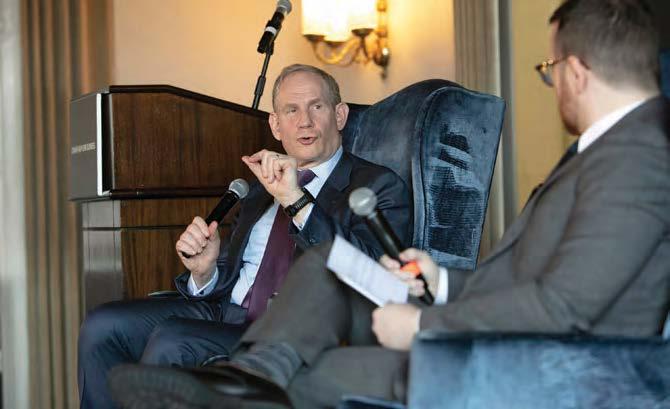
e MTA’s focus on Penn Station relates more to “modern amenities,” he said, such as wider concourses and better egress from the platforms, as seen in its new Long Island Rail Road concourse.
Lieber dismissed the notion that the MTA might struggle to accommodate an in ux of new riders once congestion pricing takes effect. “It’s bupkis,” Lieber said of the projected in ux of about 30,000 riders, noting the number is smaller than a typical daily uctuation due to weather.
He was bullish about the proposed Interborough Express lightrail line between Brooklyn and Queens, whose environmental re-
view and design are advancing thanks to new funding from Gov. Kathy Hochul. “It’s on its front foot,” Lieber said, although he declined to estimate what year it might be completed.
e MTA is “on schedule” with the property acquisitions it needs to extend the Second Avenue subway to 125th Street, Lieber said. But he reiterated that the MTA will be unable to sign contracts for excavation and tunnel-boring work until the congestion pricing lawsuits are resolved.
Lieber seemed excited by the potential $8 billion extension of the Second Avenue subway westward along 125th Street, which Hochul oated in her January State of the State address. Although far from con rmed, Lieber said the project
would get “high marks” for its potential to connect to Columbia University’s Manhattanville campus and several West Side subway lines.
Lieber called on city government to improve the city’s ability to absorb water during extreme rainfall. at storm surge threat is “the number-one issue for the subway system,” he said.
As the MTA contends with widespread vacancies in subway retail spaces, Lieber said the authority is “pretty far along” on procurement e orts for new tenants at the Times Square and Rockefeller Center stations — and said that “major museums” will soon announce art installations at some retail spaces that are otherwise unviable.
credit opinion,” Fitch said.
An almost fully occupied 48story Midtown o ce tower at 1633 Broadway houses top money managers, law rms and media out ts. Even so, the Class A building’s cash ow is falling and on April 15 a ratings agency downgraded a security holding its mortgage as risk mounts that blue-chip tenants will continue paying less for space.
Citing a drop in “sustainable” cash ow, Fitch Ratings downgraded 1633 Broadway’s mortgage along with loans for an o ce tower in San Francisco and another in Chicago. e outlook is “negative,” Fitch said in a report.
“Due to performance declines” the loans “are not considered to have credit characteristics consistent with an investment-grade
Mark your calendar to hear from all ve borough presidents on one stage –Vito Fossella, Staten Island; Vanessa Gibson, Bronx; Mark Levine, Manhattan; Antonio Reynoso, Brooklyn; and Donovan Richards Jr., Queens. They’ll discuss big issues facing the city, ranging from housing and development to public safety in a conversation moderated by Crain’s New York Business Editor-in-Chief Cory Schouten. Location:
Fitch’s move is striking because 1633 Broadway, known as Paramount Plaza, looks to be in robust health by certain measures. e 2.6 million square-foot property at the corner of West 50th Street is 96% leased, according to a February presentation from landlord Paramount Group. Tenants including Allianz Global Investors, Morgan Stanley, Warner Music Group and law rm Kasowitz Benson Torres have long-term leases.
Annual cash ow has fallen by 6% since 2020, to $98 million, according to a report released last month by bond-rating rm KBRA. Rental income may come under further pressure soon because
leases accounting for 25% of the building’s base rent will come due in the next two years.
Showtime Networks, the third-largest tenant at 260,000 square feet, could move out when its lease expires in January 2026. Charter Communications’ 100,000 squarefoot lease expires next year.
Showtime, a division of Paramount Global, pays about $55 per square foot and Charter $72, KBRA data show. Showtime has ve- and 10-year renewal options. Kasowitz Benson has the right to terminate its lease on 150,000 square feet of space this spring, KBRA said in a 2019 report. A spokeswoman for the law rm did not immediately respond to a request for comment.

1633 Broadway’s $1.25 billion mortgage, which carries a belowmarket interest rate of 2.99%, doesn’t have to be re nanced until 2029. At the last nancing in 2019 building owner Paramount Group pocketed $140 million of the loan proceeds.
If the companies stay, they may command lower rates because Fitch said there has been “further weakening” in Midtown leasing since its last assessment 12 months ago.
One piece of good news is
Paramount Group owns about 13 million square feet of commercial space in Manhattan and San Francisco. e real estate investment trust’s stock traded April 16 for about $4.50 a share. A spokesman didn’t reply to a request for comment.

L’abeille à Côté in Tribeca, a new addition to Michelin’s guide, features French-Japanese cuisine. | NOBUYUKI NARITA
Michelin added 10 new names to its New York City restaurant guide on Wednesday, an early tease for the next awarding of its coveted stars. e newcomers to Michelin’s New York guide could end up receiving a star or land a spot on the Bib Gourmand list, which features restaurants that serve high-quality food at a relatively low cost.
e stars, which are widely considered the crown jewels of the restaurant industry, will be unveiled at a ceremony later this year, though Michelin has yet to announce a date.
Last year, the coveted honors were unveiled on Nov. 7 at a rst-of-its-kind ceremony at Spring Studios in Tribeca that combined the programs for New York, Chicago and Washington, D.C. In years past, each city hosted its own event.
e newcomers, which Michelin described as
“delicious and wallet friendly,” are:
L’abeille à Côté, 412 Greenwich St., Tribeca
Bar Miller, 620 E. 6th St., East Village
Bangkok Supper Club, 641 Hudson St., Meatpacking District
Untable, 529 Henry St., Carroll Gardens
Shota Omakase, 50 S. 3rd St., Williamsburg
Moono, 29 E. 32nd St., Midtown East
Noksu, 49 W. 32nd St., Koreatown
Chef’s Table at Brooklyn Fare, 431 W. 37th St., Midtown
Barrio, 3764 E. Tremont Ave., rogs Neck
Cecily, 80 Franklin St., Greenpoint
At last year’s ceremony, two new New York restaurants earned their rst 2-star designations and eight local spots got their very rst star. For a 2023 recap, visit crainsnewyork.com/restaurants/2023-michelinstars-awarded-new-york-restaurants.


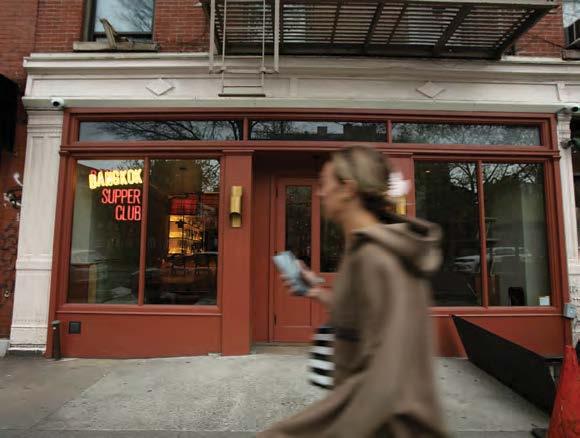


The 8,200-square-foot property includes six bedrooms, a wine cellar and landscaped garden
The billionaire head of a soap and shampoo company appears to have cleaned up with the sale of his uptown townhouse.
Glenn Nussdorf, chief executive o cer of Long Island’s Quality King Distributors, has found a taker for 14 E. 81st St., a six-bedroom, six- oor spread on the Upper East Side, for $19.6 million, according to the city register.
lion for the property in 1997, according to the register, the equivalent of about $14 million when adjusting for in ation, and so appear to have nabbed a tidy pro t.
$19.6M
In 2023 the median sale price of townhouses Manhattan-wide was $5.8 million, according to the appraisal rm Miller Samuel, while the properties required discounts of more than 6% to sell.
The sale price for 14 E. 81st St. on Upper East Side
Nussdorf and his wife, Claudine, had hoped to get more for the 8,200-square-foot property, a 20-foot-wide, elevator-equipped edi ce from 1884 on an elegant block near Fifth Avenue. e couple listed the property, whose primary suite encompasses the entire third oor, in May 2023 for $22 million, meaning it sold after a haircut of 11%.
But the home, which features a wine cellar, a landscaped garden and a living room with a replace, sold in relatively quick fashion, going into contract Feb. 29 and closing April 9, according to the city register.
Some townhouses in the same price bracket have taken years to trade, even before sales slowed to a crawl amid continuing high interest rates for loans.
But the Nussdorfs paid $6.8 mil-
No. 14’s buyer was the limited liability company Coriolanus, a nod perhaps to the banished Roman general and character in the Shakespeare tragedy of the same name. Signing the deed on behalf of the company was Victoria Black. e deal appears to have been all in cash; no mortgage is recorded in city records.
Adam Modlin, one of the brokers who marketed the property and the one who closed the deal, did not respond to a request for comment. And e orts to reach Nussdorf at his Long Island warehouse, which is in an industrial park in Bellport, were unsuccessful by press time.
In 1961 Nussdorf’s parents, Bernard and Ruth, founded Quality King in Queens. It sells brandname bath and beauty products at discounted prices to mom-and-

pop-type retailers.
From the get-go, the business has bene ted from the fact that U.S.-made shampoos, perfumes and pharmaceuticals are often sold overseas at lower prices than they are stateside. Because the products usually don’t require the same expensive marketing campaigns that they do here, the lower prices can be justi ed, analysts of the company have said.
For its part, Quality King would purchase the American-made products in places such as Europe, and then import them back to this country, reselling them to
Vornado CEO says cost of luring new of ce tenants is ‘a killer’
Aaron Elstein
Manhattan o ce owners have spent millions on new lobbies and other improvements in the last few years to make their towers more appealing. e cost is starting to hurt.
“ is is a killer,” wrote Roth, Manhattan’s second-largest commercial landlord, in his annual letter to shareholders released April 10.
heart, for sure,” Goldfarb said in a client note.
stores for more than they paid but less than what the domestic versions cost.

e “gray market” strategy hasn’t always gone over well: A hair care company sued Quality King in the late 1990s for undercutting its brands in a case that went all the way to the Supreme Court. But the court’s justices unanimously sided with Quality King, ruling essentially that distributors could set any prices they like for resold goods.
More recently, Quality King ended up in the news for allegedly
jacking up the price of some Lysol products by as much as 50% to clients, including a dollar store on the Lower East Side, when there was a rush on disinfectants at the start of the pandemic. e company ultimately paid a ne of $100,000 to New York state authorities for price gouging during an emergency. Nearly 1,500 disgruntled customers received checks in the settlement.
“Notwithstanding all the noise, it’s important to note… that our business units have by and large, and in the aggregate, held up very well.”
Steven Roth, CEO of Vornado Realty Trust
Steven Roth said that to induce companies to take space at his rm’s buildings, Vornado Realty Trust must rst commit as much as $300 per square foot divided equally between tenant improvements and free rent.
e costs of securing new tenants amount to more than $40 per square foot over a 10-year lease, Roth said. at’s a painful sum considering Vornado says the weighted average rent in its Manhattan o ce buildings, including the impact of free rent, is $100 a square foot.
Piper Sandler analyst Alexander Goldfarb said the costs “jumped out” because they erode pro t margins at Vornado, which owns 20 million square feet of o ce space around the city, including at 1290 Sixth Ave. and the Farley O ce Building, among other locations.
“O ce ain’t for the faint of
Roth, who has more than 50 years of experience in real estate, said that his rm is “clear-eyed and realistic” about near-term challenges. In the coming months mortgages will have to be renanced at higher rates for such properties as 280 Park Ave. and 731 Lexington Ave. He advised Vornado will “certainly have a few workouts to deal with over the next couple of years.”
“ at goes with the territory,” he said.
Roth said he’s optimistic Vornado will weather the storm thanks to its attractive properties; plus, there won’t be much new o ce space to compete with thanks to hostile nancial markets. He described 245 million of New York’s 422 million square feet of o ce space as “old, tired, obsolete, and well past their sell-by date.”
“Notwithstanding all the noise,

it’s important to note…that our business units have by and large, and in the aggregate, held up very well,” he added. “Interest rate increases and other below-the-line items have, of course, taken their toll.”
Roth also explained in his letter why he withdrew from bidding for a casino license. He said tenants leasing space at Penn2, his recently renovated tower next to Penn Station, would
not want to work across the street from a casino on the site of the demolished Hotel Pennsylvania. Penn2, he said, will generate $100 million in incremental income and more than $2 billion in incremental value. He put the odds of any bidder winning a casino license at no better than 10%.
“Two billion dollars of value creation vs. a 10% chance in a long-tailed governmental process – this was an easy call,” he wrote.
Smoother transfers at Jamaica station and procuring new, modern trains to improve service on the Long Island Rail Road are key priorities for LIRR president Robert Free, who as of April 11 has dropped “acting” from his title and took over railroad operations.
Since the launch of full service at Grand Central Madison, and a recent expansion of City Ticket discounts to encourage the use of commuter rail within the boroughs, Jamaica station in southeast Queens has become an increasingly important regional transfer point for riders to get around the city, Free said in an interview. To re ect that, Free said he’s prioritizing schedule adjustments for more seamless connections, an issue that was a pain point during the initial launch of Grand Central Madison service in early 2023.
“I don’t mean adding time to the overall running of the train, that’s not the answer,” said Free, who became acting LIRR president in October; he began his career with the agency as a station cleaner more than 30 years ago. “Maybe we have too much time on one end of the
“Our commuters tell us how to adjust service over time. If people are voting with their feet about where they want to go, we will make adjustments, but right now we are happy with how it stands.”
Janno Lieber, MTA chair and chief executive
trip and we need to switch it to a particular location so it allows for a better ow in Jamaica, things like that we are looking at.”
e Metropolitan Transportation Authority is working with consultant Network Rail to dissect data from Jamaica station, which features eight tracks, 93 switches and 140 signals, to better sync trains and reduce transfer confusion with improved communications, according to Free. He added that procuring new trains to retire older models and accommodate more riders is also key.
Such changes are expected to make it easier to travel into Grand Central Madison, which has enabled Long Islanders to ock to Midtown East more now than in the past several years. When service debuted at the station, transit o cials estimated it would divert
45% of LIRR commuters from Penn Station to the new Grand Central stop. Initially that gure was closer to 30%, but Free said it has since consistently exceeded 40% of riders diverting to Grand Central Madison.
Despite the uptick, Free said a boost to Grand Central Madison service currently isn’t in the cards.
“I think we have the right mix of service,” he said. Although Free and MTA Chair and Chief Executive Janno Lieber said they will
continue to monitor tra c patterns and are open to adding service where needed.
“Our commuters tell us how to adjust service over time,” Lieber said in an interview. “If people are voting with their feet about where they want to go, we will make adjustments, but right now we are happy with how it stands.”
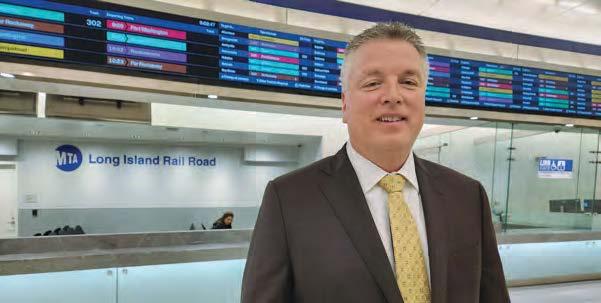























In New York’s fast-paced economic environment, it’s essential to stand out with innovative strategies for enduring success. Armanino is dedicated to advancing New York area businesses rapidly and effectively.





Our comprehensive services, including strategic advisory, consulting, tax solutions and more, are tailored to elevate your business. By merging forward-thinking methodologies with the power of AI, we









provide unparalleled guidance through market uncertainties.













Explore how we can help unlock your business potential faster and accelerate your journey to success.

















Congressman Gregory Meeks’ handpicked candidate for judge’s seat is in danger of losing the upcoming June primary
It would be easy, and ultimately correct, to declare the era of political machines over in New York City.
Individuals, PACs and labor unions matter much more in local races than the old Democratic organizations. e days of borough bosses like Meade Esposito and Stanley Friedman are long past. Party bosses no longer control much patronage or oversee clubhouses teeming with political foot soldiers. In every borough, the county Democratic apparatuses are shells of their former selves.

In Queens, the party boss era ended dramatically when Alexandria Ocasio-Cortez defeated Joe Crowley, who was one of the top-ranked Democrats in the House and a county leader still feared on the ground, the sort of politician who was deciding almost unilaterally who became City Council speaker and how many of his friends would work in that o ce. His successor as party chief, Gregory Meeks, no longer has that reach, even with a fellow Southeast Queens resident, Adrienne Adams, in the speakership.
Now Meeks, a veteran congressman, is clinging to the last bastion of patronage his party organization possesses: Surrogate’s Court.
e land of the dead in Queens has long been lucrative for those connected to the party organization because they decide who the judge is and which well-wired lawyers get to administer the estates of those who die without wills. Gerard Sweeney, an attorney who has spent decades as a power broker and lawyer for the Queens machine, has become a millionaire from the court, collecting enormous fees from various estates.
e outgoing Surrogate judge, Peter Kelly, is the brother of Crowley’s former chief of sta . He helped ensure Sweeney and other party allies were paid handsomely throughout the years.
e trouble for Meeks is that his handpicked candidate, Supreme Court Judge Cassandra Johnson, is in danger of losing the upcoming June primary.
One challenger, Civil Court Judge Wendy Li, has outraised her and is expected to perform well with the borough’s burgeoning Asian population. Li has appeared on nomination petitions with Hiram Monserrate, who was ousted from the state Senate in 2010 over a domestic assault conviction and served time in prison for misusing taxpayer money as a City Council member. Monserrate has run re-
peatedly for elected o ce since and is trying this June to win an open Assembly seat.
Another Surrogate contender, Donna Furey, is a long-practicing elder law attorney with the backing of progressives and reformers. Based out of Astoria, she can tap into the growing share of left-leaning voters in the western half of Queens.
It’s plausible Furey or Li could keep Johnson from winning, though she should still be considered the favorite because her Southeast Queens base, where Meeks is from, remains vote-rich. With turnout expected to be low, Johnson’s core of middle-class Black supporters could show up for her. Johnson will also bene t from the endorsements of sitting elected o cials: With few voters understanding the stakes of the election, validation from members of Congress will matter even more.
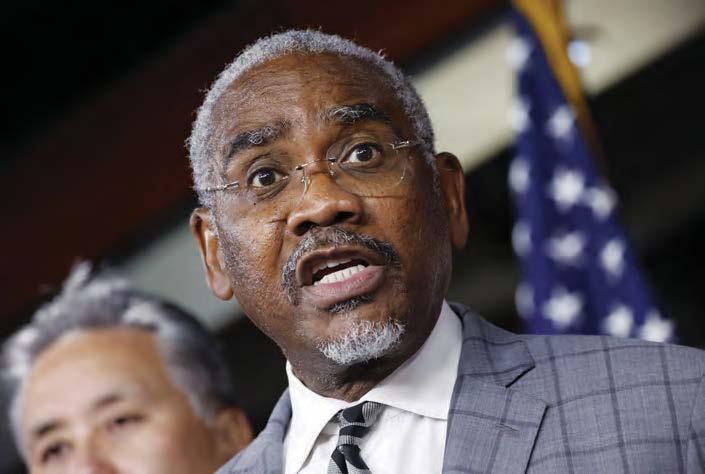
nal weeks before the election. Ocasio-Cortez doesn’t always weigh in on local a airs. If other Democrats, like the socialist City Council member Ti any Cabán and progressive Shekar Krishnan, lend her a boost, she could be formidable.
One question, for Furey in particular, is if Queens’ rising progressives will fully back her campaign and stump for her in the
For the party attorneys who have spent decades getting wealthy in Surrogate’s Court, it will be a nervous June. Li, for them, is unpredictable. Furey would undoubtedly cut o their sinecures. ey need, very badly, for Johnson to win.
Without Surrogate’s Court, the Queens machine will be truly dead.
Ross Barkan is a journalist and author in New York City.
Either way, the fact that there is a competitive election at all is a marker of the Queens organization’s weakness. Kelly, the outgoing judge, was unopposed because too many Democrats feared crossing Crowley. Meeks cannot tamp down challengers in the same manner.
Gov. Kathy Hochul has earmarked $359 million to establish and expand supportive housing options for New Yorkers, she announced April 9.
Supportive housing developments help tenants access primary and behavioral health care and ensure they attend appointments. e case management services are often carried out by nonpro ts. e state nancing, a mix of bonds and subsidies, will create a total of 329 supportive housing units in Brooklyn and the Bronx across four development projects.
One project will create 115 affordable homes in the Mount Hope neighborhood in the Bronx, including 69 supportive units for homeless New Yorkers with mental illness and substance use disorder, for $54 million. Yonkersbased nonpro t Westhab will connect the supportive unit tenants to community mental health providers and o er employment counseling, according to its chief executive Richard Nightingale.
The Yonkers-based nonpro t Westhab will connect the supportive unit tenants to community mental health providers and offer employment counseling.
e state will invest $83 million in a similar development in Brownsville, where L+M Development Partners will construct a new building on the campus of the existing Marcus Garvey Apartments. e campus currently o ers 52 supportive units for formerly incarcerated New Yorkers, and the project will add 88 with services provided by South Bronx-based nonpro t the Osborne Association.
Christina Green, Osborne’s supportive housing director, told
Crain’s sta will connect tenants 50 and older to primary and behavioral health care, employment support and nancial literacy classes. e association and the developer decided to expand services for individuals in that age group to meet growing demand, she said. By 2030, about one-third of people incarcerated in the state will be 50 or older. L+M Development aims to break ground on the new Marcus Garvey apartments in May and complete them by December 2026, Green added.
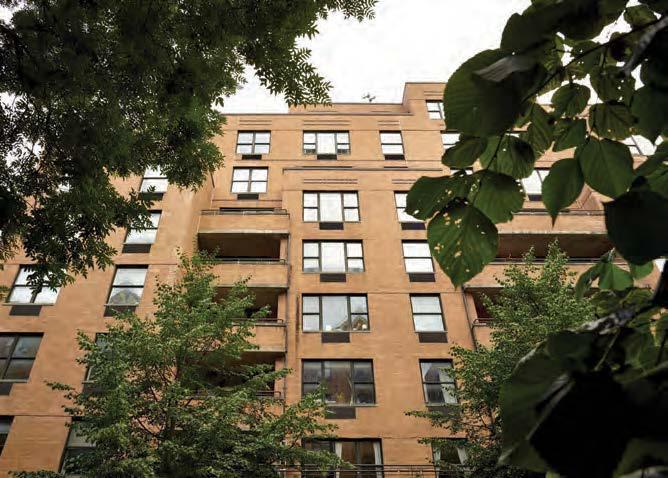
Beyond the Mount Hope and Brownsville projects, the state will invest $170 million to build 385 a ordable units in East New York, including 94 supportive apartments for families experiencing homelessness. Additionally, developers e Jericho Project and Procida Development Group will receive $52 million to build 129 units in the Melrose section of the Bronx. e project will include 78 supportive units for homeless youth and adults and 42,000 square feet of community space where case managers can work with tenants.
Hochul announced the funding as part of a total $412 million she has dedicated to six a ordable housing projects. e nancing is part of her $25 billion housing plan which aims to create or preserve 100,000 a ordable homes across the state, including 10,000 supportive units.
On March 26th, Crain’s New York Business and Esri, a market leader in geographic information system (GIS) so ware, hosted a virtual event exploring pioneering applications of geospatial technologies for sustainability and climate initiatives. Attendees heard from leaders at organizations that have implemented tools such as spatial analytics, digital mapping and digital twins to tackle issues related to sea level rise, urban planning, transportation, and more.
Moderated by Dr. Steven A. Cohen, senior vice dean of the Columbia University School of Professional Studies, the event began with a keynote address by Dr. Julian Reyes, assistant director of climate services at the White House.
“Our vision is to provide every American, every community and every business with access to useful climate services,” Reyes said. He demonstrated a new resource for leaders in cities and communities – a real-time climate map of the whole country, with detailed information down to the census-tract level. e CMRA (Climate Mapping for Resilience and Adaptation) is a portal that shows what’s happened in the last 90 days — wild res, ooding, drought — but also
what’s happened in the last 30 years, and what is predicted to happen in the next 30. CMRA includes population, demographic, environmental, and even building-code data..
Next, presenters from Austria, Australia, and Spain showcased three destination cities where GIS mapping so ware has been used to achieve climate goals.
Petr Bocharnikov, a geodata strategist at Sokigo, which delivers scalable solutions and services for municipalities, described the 3D model being used to develop aspern Seestadt, a sustainable district city in Vienna with high e ciency buildings and renewable energy. “Our 3D model provides access to information while documenting ongoing projects,” he said. “We have multiple data layers around existing conditions, and the master plan provides important cartographic materials to internal users, external architects, developers and engineers.”
In Brisbane, Australia, where leaders are preparing to host the 2032 Olympics, a digital twin is allowing for the design and build of the underground Cross River Rail project with maximum mobility and minimal environmental impact. Russ Vine,
general manager for communications and engagement for the Cross River Rail Delivery Authority, shared how.
“We use an operational delivery twin — a virtual representation of the system — in the building stage, and another digital twin to support the infrastructure upon completion,” he said. “ is technology allows us to re ne plans for optimal end results.”
Half a world away, Valencia, Spain, has been recognized as the 2024 European Green Capital, having met more than 12 urban sustainability criteria. Antonio García-Celda, general director of the Green Capital of Europe, spoke of Valenciaport, a landmark feature in the city that is among the world’s greenest ports.
“Geospatial technology allows Valencia to serve as a model green city for other Mediterranean cities to emulate,” he said. “We use innovative tools for real-time monitoring projects, such as inspections of the municipal sewage network.”
During a panel discussion, experts discussed three topics crucial to sustainable city planning: mitigating extreme heat, protecting communities prone to ooding and planning smart cities with digital twins.
Dr. Brett Sanders, a professor of civil and environmental engineering at the University of California, Irvine, was asked about new tools and analysis methods that can help New York City prepare for unexpected realities.
“Legacy forecasting systems are helpful,” he said, “but we also have newer, more advanced methods that allow us to identify speci c streets or parcels of land that stand to be most a ected by, say, precipitation at a given time. With spatial data and simulation tools, we can have a good sense today of the impact of tomorrow’s storm.”
ese technologies can give cities a real edge when it comes to planning decisions related to impending hazards. But they also o er more than that: “An investment in a simulation isn’t just about forecasting,” said Sanders. “It can also be used to plan the next upgrade to a oodwall, or improvements to local drains.”
Sydney Rich, an urban planning consultant at Esri, shared how technology and accessible data can be leveraged to ensure that cities are equally protected from the perils of extreme weather. “We need to identify vulnerable communities and evaluate their climate risks,” she said. “We’re
using technology to measure inequities in access to services, environmental conditions, access to opportunity and more — including several resources doing so in New York City.”
Dominik Tarolli, director of smart cities for Esri, closed with a keynote focused on the future of geospatial technology including a proven path for sustainable cities: “A smart city is one that rst, can adapt to change. Second, it is a well-run operation with e cient governance. ird, it uses data to make informed decisions. And nally, it focuses on civic inclusion and is well connected with residents.”
In describing the last of these, Tarolli showed a video in which New Yorkers interacted with augmented reality technology via an app, which allowed them to see how sites currently under construction would look when work is complete.
“Smart cities are those that are connected and engaged with the people who call them home,” he concluded.



In an era demanding bold action, New York’s latest housing legislation emerges as a disheartening testament to political timidity. As the state grapples with an escalating housing crisis, the recent agreement announced by Gov. Kathy Hochul with state legislators, while a step forward, illustrates a preference for halfmeasures over real change.
e crisis itself is stark: soaring rents and home prices pushing residents to the brink, a growing mismatch between the booming job market and the lagging housing supply. Since 2010, the city has added 800,000 people but only 200,000 homes. e state's response? A watereddown agreement that seems more about political convenience than solving these critical issues. It's a classic example of box-checking — a way for legislators to arm themselves with talking points for re-election campaigns, rather than deploying the political courage necessary.
e centerpiece of the deal is a replacement for the 421-a tax break — now known as 485-x — which gives developers a prop-
erty tax exemption for building new multifamily residential housing. e 485-x program would raise construction workers’ wages, expand high-wage positions to more neighborhoods and apply them to buildings as small as 150 units — more generous than the previous 300-unit cuto .
“ e new tax exemption program for housing production, 485-x, will produce less rental housing than its predecessor, 421-a,” James Whelan, president of the Real Estate Board of New York, has said.
Bene ting a select few
What’s more, the version of the “good cause” eviction protections out of Albany only evoked derision from both tenants and landlords.
Finally, this legislative package is New York City-centric. Suburban voters have pushed back so hard on new housing that their representatives in the state Legislature fear for their seats. is omission underscores a lack of comprehensive strategic thinking. What’s needed is a uni ed

area-wide approach to the housing shortage.

Hochul initially proposed a bold vision to tackle the housing crisis, and now she appears to have retreated into safer political territory, settling for a deal that sidesteps potential backlash. If the Metropolitan Transportation Authority had had the same hesitation about congestion pricing, for example, this transformative project would never see the light of day. is legislative package, while it may bring some relief, falls short of the decisive action needed to address the housing crisis. It’s a continuation of the status quo that bene ts a select few while the broader populace continues to struggle with af-

Legislators should feel not just the weight of missed opportunities but the urgency to rectify this tepid approach in future sessions.
Employers and plan sponsors are increasingly choosing to self-fund their employee health plans to achieve greater control over the value and volume of their healthcare spending. Since 1999, when self-funded health plans covered 44% of the nation’s employees, the percentage of employees covered by self-funded plans has grown to 65%.
Self-funding o ers many benets, but it also comes with risks for plan sponsors. Instead of paying premiums to an insurance carrier to cover the possibility of high-dollar claims, the health plan sponsor takes on that risk and funds all potential claims.
countability and value. However, highdollar claims threaten to counteract the many bene ts of self-funding. A single claim could be catastrophic not only for the member but also for the plan sponsor and other employees who depend on healthcare coverage.

But how big is the risk? e number of million-dollar claims for covered employees rose 45% between 2019 and 2022, according to a recent report. A few highdollar claims in short succession, or even a single catastrophic claim, could have a massive impact on self-funded plans. Most plan sponsors carry stop-loss insurance, which provides reimbursement for claims that exceed a certain amount, but managing claims at the billing level remains essential for keeping total costs contained. Self-funding using a high-quality, multicapability third-party administrator (TPA) provides advantages in exibility, ac-
Two types of stop-loss coverage provide protection for plan sponsors against high-dollar claims: specific and aggregate. Speci c stoploss (or individual stop-loss) protects against a high-dollar claim for any one individual, rather than against an abnormal frequency of claims in general. Aggregate stoploss, on the other hand, provides a ceiling on the total amount that a plan sponsor could pay for eligible claims during a contract period. e insurance carrier therefore reimburses the plan sponsor after the end of the contract period for aggregate claims above a certain amount.
Stop-loss insurance is an e ective way to minimize nancial risk without sacri cing employees’ healthcare quality. However, many stop-loss insurance policies have coverage limits, and the plan sponsor is responsible for each claim’s initial cost.
at’s why, along with stop-loss insurance, a methodical and deliberate highdollar claims review process backed by a
robust medical management program can make a signi cant di erence.
Because high-dollar claims mean di erent amounts to di erent sponsors, what triggers a high-dollar review is highly customizable with the best TPAs and can be triggered for claims over certain thresholds established by the plan sponsor. Most high-quality TPAs have an expert highdollar review team with years of experience ensuring claims are priced and billed correctly according to the contract, while also paying special attention to site of care and supply charges.
When claims are passed to a high-dollar review specialist, they comb through every aspect of the claim for accuracy in billing, pricing and adjudication. e best programs incorporate experts who can decipher and ag clinical, network and coding issues, determine the appropriateness of charges and even negotiate better payment terms. en an internal expert team reviews the claim to make sure the documentation matches, the interventions were clinically appropriate and pricing re ects any relevant discounts. Finally, the best practice is to partner with an external vendor to provide a third-level review to ensure correct pricing and coding.
As medical prices vary widely depending on the site of service — with little discernable di erence in quality of care — the best TPAs o er comprehensive medical management programs to mitigate wasteful spending. Often, hospital-based care comes with

extra costs, such as hospital fees for providers, lab and imaging fees and outpatient costs for hospital-contracted providers. To contain these costs, care coordinators reach out to members to ensure they are receiving the best value care. is can mean redirecting members away from expensive hospitals and health systems and toward preferred providers who can deliver the same or higher quality care at a lower cost.
For self-funding to work at its best, plan sponsors need to be equipped with customizable tools and expert resources from their TPA to enhance the member experience, improve health outcomes and ultimately, achieve health care goals and objectives. High-dollar claims review is just one aspect of an e ective medical management program that is geared toward health care enablement.
Coupled with other strategies such as accountable care, direct contracting and chronic disease management, high-dollar claims review can be another useful tool for bene ts professionals seeking to deliver more value for their organizations’ expenditures on employee health bene ts.
When New Yorkers were recently surveyed about their top concerns for state lawmakers, the number one issue was a ordability: housing and rent, child care, groceries, health care, transportation — just paying for the basics of life.
It’s understandable and it’s real; almost everyone has been hit by record in ation after the pandemic.
What many folks haven’t realized is that a major aspect of these rising prices is corporate greed: “greed ation” by huge, powerful, and pro table corporations accounts for over half of increased costs for consumers.

at’s one reason why there’s a class of New Yorkers who have no problem a ording the basics, the extras, the luxuries, and the extravagances: the billionaires and millionaires of Wall Street who are enjoying bigger bonuses, greater wealth, and extraordinary pro ts at the corporations they own or control.
And that’s why you should reject the fearmongering from their paid lobbyists who say that the most important thing state government can do is take care of rich people who work in the nance and securities industries.
New York is the most economically unequal state in the country: the average in-
come of the bottom 99% is $49,617, while the average income of the top 1% is $2.2 million.
And New York is home to the highest concentration of extreme wealth in the nation. Over 28,000 tax lers hoard wealth in excess of $30 million, over 15,000 tax lers hoard wealth in excess of $100 million and 130 billionaires hoard over $666 billion.

e ultra-rich in New York State collectively hold $6.7 trillion in wealth — they’re not hurting. e rest of us are.
Over two and a half million New Yorkers are living in poverty. In Syracuse, Rochester, and Bu alo, 1 in 4 people lived in poverty, in 2021.
Over 100,000 New Yorkers are homeless every night in New York City. A record 1 in 9 New York City public school students were homeless last year.
Rent across the state — from Manhattan to Syracuse — is too damn high for millions of New Yorkers.
Meanwhile, Black and brown working-class families and everyday workers making $32,000 to $65,000 a year — are leaving the state in droves in search of a more a ordable life. It’s no wonder we’re losing nurses, home health care workers,
small business owners, and child care providers — the people who keep this state running.
Extreme inequality, extreme poverty, and extreme wealth are getting worse because of government policies that serve as a “wealth pump,” driving all the bene ts of a growing economy higher and higher up to a tiny minority of billionaires and multimillionaires.
It’s good that Albany lawmakers want to take things in a di erent direction.
In 2021, New York reformed our tax laws so millionaires and big corporations paid more in taxes, generating $10 billion in new public funds to invest in our communities. at paid for emergency rental assistance, aid to public schools, unemployment bene ts for “excluded workers” and a $1 billion fund to support small businesses — things that made our state and economy more balanced and more fair.
e billionaires and millionaires didn’t leave — we got more of both. e modest tax hikes on the wealthiest were e ective and popular.
Now, the State Senate and Assembly aim to repeat that success, taxing only the ultra-rich to invest in a ordability for all.
ey’ve put forward a package that will help the vast majority of New Yorkers: affordable housing construction, direct aid to individuals struggling without homes, funding for child care, public education, and healthcare, and new tax credits for working families to help them make ends meet.
A recent poll showed that 3 out of 4 New Yorkers support an agenda like this. It’s re-
Congestion pricing can help achieve the MTA’s vision of systemwide accessibility
As the MTA’s rst chief accessibility o cer, who also happens to be living with a permanent physical disability, and the MTA’s rst board member who is a medical doctor, and who also happens to be living with a signi cant visual disability, we work in partnership to ensure we represent the diverse voices of the community when important decisions are being made at the MTA.

Accessibility is more of a priority for the MTA than it’s ever been before, and yet we know better than most how far we have to go. We have many more subway and rail stations to make accessible, thousands of bus and rail cars that need better visual and audio announcement systems, and entire swaths of our city that would bene t from expanded subway service.

Quemuel Arroyo is the Metropolitan Transportation Authority’s chief accessibility o cer. John-Ross Rizzo is a physician-scientist-leader at NYU Langone Health.
e community that bene ts from these investments is so diverse — from wheelchair users to those with limited-to-no vision, to the millions of seniors, parents, and tourists who rely on transit to navigate New York every day. To build a system that works for all of these groups — with improved vertical access, enhanced multisensory commutations, and better leveraging technology to tackle access barriers — we need capital investment. It’s those capital dollars that allow us to continue enhancing accessibility, and keep our transit system in a state of good repair so it can continue to function safely and reliably for millions of users every single day. For the rst time, the MTA has a roadmap to get to systemwide accessibility, but we need to keep our foot slammed on the

ally popular, it’s good economic policy, and — in an election year — it’s really good politics.
If Governor Hochul and New York Democrats want to win elections this year, they must deliver on a ordability and fairness. As President Biden has demonstrated, insisting on tax fairness is a crucial component of this e ort.
Albany should reject the corporate lobbyists’ sales pitch — taking care of the rich isn’t the most important priority right now.
Governor Hochul should work with legislative leaders, unions, community groups, and our faith communities to pass policies that will boost a ordability for millions statewide. at’s how to create a real “shared commitment to the success of New York” — make it work for everyone, not just the wealthy and well-connected.
accelerator to get there — not get stuck in tra c ‘congestion.’ Finally launching congestion pricing — a program approved by our state legislature 5 years ago — is critical to achieve these goals, ensuring the MTA can continue investing in the system and setting the transit equity standard that moves all of us New Yorkers and those that visit our city for work, fun, or top-quality healthcare.
Congestion pricing will truly unlock New York, bringing faster bus and AccessA-Ride (AAR) service, cleaner air for all, faster emergency vehicle arrival times and much, much more. ese bene ts are huge, real, and critical for many of the groups we work with most closely. New York City and our transit system are complex — always changing for the better — and this program is no di erent. We expect it will transform and improve over time and we know disability advocates will push for that; and we as board members
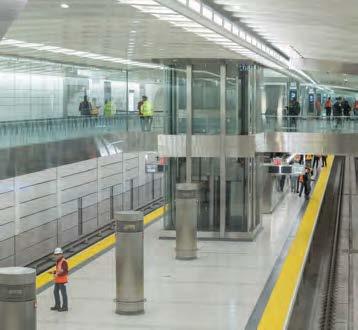
are responsible for ensuring the MTA is transparent in reporting on the program, including the use of exemptions for vehicles transporting people with disabilities. We all need congestion pricing to ensure our buses and AAR trips run faster and to help us in our journey to build a more accessible and inclusive subway and rail system. We know more work will be critical to get this program right, including the disability exemption, but we have a strong framework in place with a roadmap that is logical, pragmatic and rigorous. Now let’s get to work!





Nominate an LG BTQIA+ leader making a difference in their industry and community.
NOMINATE BY APR. 26
CrainsNe wYo rk.com/Not a bleNoms
Dr. Dawnette Lewis, director of Northwell’s Center for Maternal Health, says its MOMS program uses AI to increase communication with patients and catch pregnancy complications earlier. |
NORTHWELL HEALTH
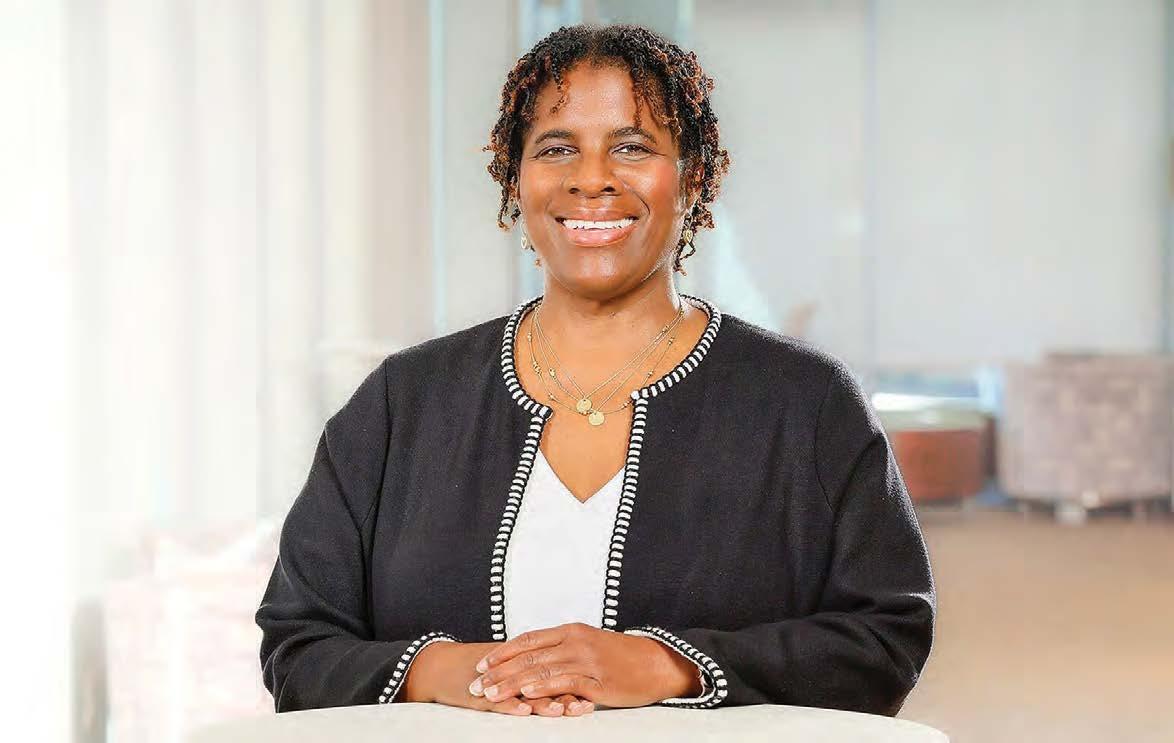
Despite known issues of racial bias in AI, Dr. Dawnette Lewis says it can still help address wide racial disparities in maternal health outcomes.
Black people in New York face ve times the risk of dying because of pregnancy complications compared to white people — a signal that there’s a lot of work to be done, said Lewis, a maternal-fetal medicine specialist and the director of Northwell’s Center for Maternal Health. But she added that health systems are using technology to develop solutions to this crisis – and are making strides.
Lewis said Northwell’s Maternal Outcomes Navigation program, also known as MOMS, for example, uses AI to increase communication with patients and identify pregnancy complications early. The combination of an AI chatbot and a corresponding team of medical professionals has monitored 6,500 postpartum patients in the two years since it launched – and has reduced hospital readmission rates within a month among Black patients by 60%. Lewis spoke to Crain’s about how the medical community can leverage AI to improve maternal health, despite its current limitations. This interview has been edited for length and clarity.
There’s been attention on the U.S. maternal mortality rate and worse outcomes among Black birthing people for decades. Why do you think this has persisted?
I think mainly it’s related to systemic racism and bias. Oftentimes I think we’ve made the assumption that chronic conditions are a driver, but even when you look at Black birthing patients who are healthy, the disparity remains. ere’s more than one element that drives the disparity.
Where do you see examples of systemic racism and bias?
A couple of years ago the NIH had a conference about how AI continues to perpetuate disparities. One of the focuses was on calculators we use in medicine to quantify risks [of certain diseases.] For example, one of the calculators was used to prioritize who gets a kidney transplant, but there was a [ gure that placed a bias] on Black patients [in the diagnostic equation.] What happened was Black patients ended up lower on the transplant list even though they were just as in need of a kidney as anyone else. ose calculators are embedded into our medical system and many don’t help but actually hurt [existing disparities.] We have to revisit

Rents were down slightly across the board in the city last month, and apartment hunters in the outer boroughs seemed particularly eager to take advantage.
e median rent in Manhattan dropped year over year in March for the rst time in four months, falling to $4,100, down month over month as well following a surprisingly strong February, according to the report from Douglas Elliman and Miller Samuel. However, this was still the secondhighest rent on record for the month.
e market also saw its highest share of bidding wars in almost two years, with 1 in 5 apartments leasing for more than the landlord’s asking price, said Miller Samuel CEO and report author Jonathan Miller.
“Even though inventory is rising, it’s still not enough,” Miller said. “I think that’s the challenge.”
By | Amanda D’Ambrosiothose, because they are built into all of our electronic medical records.
How do current diagnostic tools like this exacerbate health disparities in the OB-GYN eld?
For patients who had a prior cesarean delivery and wish to have a vaginal delivery in their next pregnancy, there’s also a calculator that factors in race. We think it increases the disparity, because when you put in race for a Black patient, it lowers the success rate of a vaginal birth after cesarean [and may be contributing to higher C-section rates among Black birthing people.] When you look at data in the U.S., in whatever state you look at, the cesarean rate for Black patients is higher. ere’s currently work to remove that from the calculator.
Northwell uses AI through its MOMS program to identify postpartum patients who need care. What are the bene ts of this technology?
When we use AI in the MOMS program, we think about how to use it to help patients communicate with us if they have any issues. We use it as a way to call for help. I think the boundary is when you use race as a surrogate to help make medical
decisions. If you’re predicting a condition like heart disease, then you should factor in risk factors for heart disease — not use race or ethnicity as one of those risk factors.
Where do you see opportunities for investments to address the maternal mortality crisis?
I think AI is a good place to start. Even though this issue is something that’s been talked about, it’s not well-funded. But everyone has a smartphone. I think [making AI chatbots or other technologies available on personal devices] could be a way to bridge the cost.
What are you optimistic about?
When I started in maternal-fetal medicine, we couldn’t get any other disciplines to even look at a pregnant patient. Now, there are articles published in internal medicine journals, hypertension journals, which recognize that pregnancy conditions are risk factors for cardiovascular conditions later on in life. I’m heartened that the American Heart Association takes this seriously, speci cally for Black mothers. Specialists aside from obstetricians in maternal-fetal medicine are now investing in women’s health and recognizing that women’s health is not just about nine months of pregnancy.
e borough’s listing inventory for March was at 7,639 apartments, down 4.1% month over month but up 20% year over year, while the vacancy rate fell slightly to about 2.4%, according to the report. New lease signings rose month over month, to 4,775, their third-highest ever for March but still slightly lower than March 2023, the report says.
In Brooklyn, the median rent was e ectively at month over month and year over year, at $3,495, the report says. It did technically rise year over year by just 0.1%, marking the fourth time in ve months it has increased. e number of new leases signed reached a record high of 3,082, up sharply month over month and year over year, while the listing inventory went up to 3,870, the sixth time in seven months it saw an annual increase.
In northwest Queens, the median rent was down slightly year over year and month over month, at $3,200, the second time in three months it went down annually. New lease signings were also the highest on record at 704, while listing inventory rose to 717, up more than 30% month over month and year over year.
e record-setting leasing levels in Brooklyn and Queens were likely due to their slight price drops, along with stubbornly high mortgage rates keeping more people in the rental market and stubbornly high Manhattan rents pushing more people to look in other parts of the city, according to Miller.
The Yankees, valued at $7.55 billion, are an economic engine for the city. How do the Mets compare?Jack Grieve
e New York Yankees are the most valuable team in Major League Baseball, and it’s not all that close. e Steinbrenner family’s organization is valued at $7.55 billion, about $2 billion more than the next most valuable team, per Forbes.
at nancial dominance goes beyond just the front o ce. e team is expected to generate $606 million in economic impact for the city over the course of the 2024 regular season, according to a new report from the New York City Economic Development Corporation.
e Mets, on the other hand, are expected to generate $353 million through the regular season, about 42% less than their cross-city counterpart.
ose gures include the sale of tickets, merchandise and concessions; transportation costs; lodging for out-of-town visitors and their spending at local restaurants; and employee salaries.
e EDC’s analysis used current ticket pricing for the 2024 season but relied on historical averages to determine attendance projec-
tions. Higher ticket prices and higher expected attendance for Yankees’ home games contributed to the team’s economic impact dominance.
e forecast for both teams is up from last year. Going into the 2023 season, Yankees home games were projected to inject $579 million into the local economy, compared to $338 million for the Mets. “ e higher impacts this year are being driven a little by in ation and a little by higher ticket prices,” said Melissa Pumphrey, the EDC’s senior vice president of economic research & policy.
At Citi Field, the median ticket price rose about $5 year over year, the EDC found. “ at’s a little more than what we’d expect if we’re just looking at the in ation rate, so some of that may have to do with just how the Mets did last year,” Pumphrey said. e team nished 75–87 last year.
Meanwhile, the cost of admission at Yankee Stadium did not change.
In a written statement accompanying the report, Mayor Eric

Adams wrote, “with baseball back, the Yankees and Mets will not only provide New York City with some of the most exciting games of the summer, but will support local businesses, create jobs, and generate nearly a billion dollars in
Rescuing & delivering nutritious food for the 1 in 5 kids in NYC facing hunger.
economic impact — and hopefully, we’ll add even more to that with deep playo runs.”
e two teams’ combined $960 million estimate does not include potential postseason berths, which can generate tens of millions of
dollars on their own. In 2022, when the Yankees made it to the American League Championship Series and played ve home games, for example, the organization saw $72.6 million in postseason collections from ticket and suite sales.
From Page 1
currently occupied.





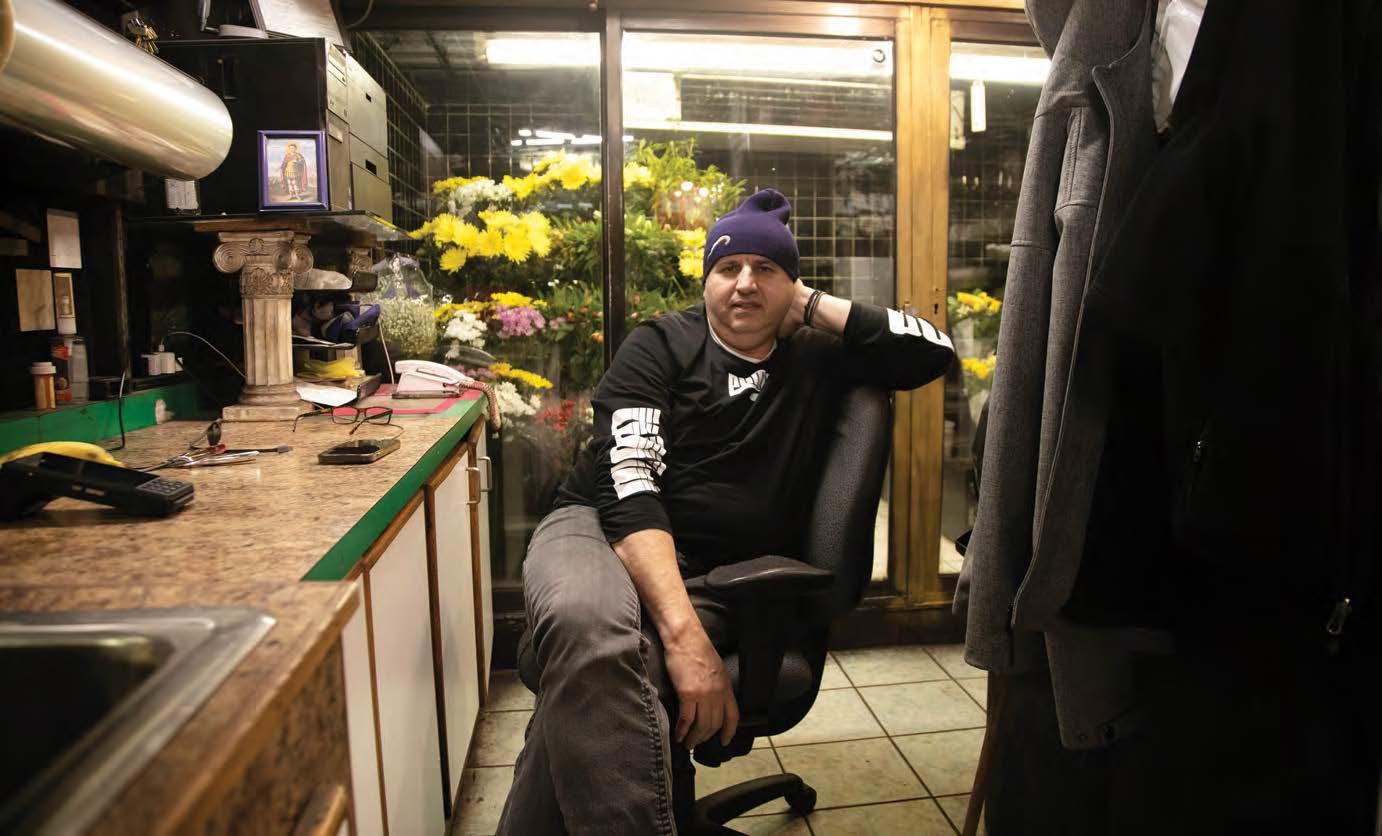
Since the Covid-19 pandemic, the MTA’s revenue from its retail spaces in the subway, Metro-North Railroad and Long Island Rail Road has greatly uctuated. Subway spaces, which took the hardest hit, are expected to generate just $4.3 million this year. MTA retail revenue
It was once convenient for straphangers to pick up items on their way here or there. But like zombie shopping malls above ground, empty subway shops are a stubborn manifestation of changing consumer habits (they’re shopping more online), exacerbated by Covid-19 shutdowns. At a time when subway ridership has mostly returned — hovering around 70% of pre-pandemic levels on weekdays — most retail tenants have not.
e MTA is trying furiously to ll the spaces — reducing rent in some cases, trying out new uses in others, even o ering free rent for public art installations — to maintain a sense of vibrancy and soften the perception that riding the subway is risky. A spike in crime in recent months and a few high-pro le incidents, including a Downtown Brooklyn shooting, haven’t helped. Street-level retail is in a much healthier position: Retail rents in Manhattan have risen for six consecutive quarters, and the number of available ground- oor spaces has dropped 33% from a mid2021 peak, according to CBRE data.
“We’re entertaining di erent types of uses,” said David Florio, the MTA’s chief real estate transactions and operations o cer. “ at’s been the most important: to keep it live, keep an activation because people like to see something, basically, open and activated within the subway.”
Florist Chris Christodou has run G orist in the Rockefeller Center station since 1981, and he said that riders who stopped by daily fell out of the habit while working remotely. “Customers I used to see all the time, I don’t see anymore,” said Christodou, 62.
When Covid rst emerged, GFlorist had little choice but to temporarily close its shop at the West 47th Street and 6th Avenue mezzanine. When the business returned, reduced foot tra c made for a lackluster rebound.
“ is generation doesn’t believe in owers as much,” Christodou said with a shrug, amid vibrant bunches of lilies, pastel roses and cheerful sun ow-
ers wrapped in waxy paper at the small underground store. “Flowers are a luxury. If you’re worried about paying your bills, you’re not going to buy owers.”
Retail space in the subway generated $9.5 million for the authority in 2019; transit o cials told Crain’s that they expect a little over half that amount, or $4.3 million, this year. at’s a sliver of the MTA’s $19.3 billion annual budget. But as a highly visible part of the system, bringing an extra bit of life to stations and platforms is just as much about enhancing the customer experience as it is about squeezing every penny out of MTA assets.
“Transit retail has to be looked at as eyes-on-thestreet, as an amenity,” said Susan Fine, who served as the MTA’s director of real estate in the 1990s, where she led the transformation of Grand Central Terminal
into a popular retail destination.
Fine, now the principal of Fine Development Partners, went on to develop the MTA’s rst privatelynanced subterranean retail center in 2016: a 325-footlong corridor of diverse food o erings, trendy shops and kiosks called the Turnstyle Underground Market. Located at the 59th Street-Columbus Circle stop, the Turnstyle shops are outside the actual subway turnstiles, so customers don’t have to pay a subway fare before shopping. By contrast, most subway retail is beyond turnstiles in station mezzanines and on platforms.
Turnstyle, which features roughly 40 storefronts, was a smash success when it rst opened. It has suffered the trials of Covid as well, and on a recent weekday, just over half of the storefronts and kiosks were open for business. But even at half occupied, it’s a suc-
More than optics



cess story for a system rife with vacancies. “ e urge to linger in the subway has gone,” said Fine. “When the spaces are dark it makes the station feel unsafe. ere’s nothing worse than an empty space.”
Addressing subway safety — dangers both real and perceived — has become an escalating xation for elected o cials.
In March, Gov. Kathy Hochul now infamously deployed hundreds of National Guard soldiers into the subway to assist police with bag checks. Mayor Eric Adams is preparing for expensive investments in AI-equipped metal detectors in the system beginning this summer. e perception of safety will be key as MTA o cials seek to lure drivers out of cars and onto mass transit with the mid-June launch of congestion pricing.
“The shorter lease means there’s less pressure; knowing I can pack up and leave if the business is not in sync is very helpful.”
Kristel Delevante of LanaBlu Boutique
All the retail vacancies across the system aren’t helping. Neither has the legal battle that broke out earlier this year between the MTA and the real estate rm that oversees retail in Lower Manhattan’s Fulton Transit Center, an 190,000-squarefoot, four-story retail hub at the mouth of multiple subway entrances. Mall giant West eld is trying to break its 20-year lease with the MTA after just 10 years, blaming persistent crime and unruly behavior for scaring away tenants.
On the opposite end of the spectrum, Turnstyle became one of the rst transit retail hubs to make a post-Covid comeback, in October 2020. At the time, MTA Chair and CEO Janno Lieber touted the relaunch as an “important moment” for

the rebound of transit and the economy. Kristel Delevante opened her LanaBlu Boutique in Turnstyle in 2022 after running a pop-up kiosk in the corridor. At the heart of the store are racks of Lucite hoop earrings, beaded bracelets and pendant
More than 70 years ago, vending machines dominated the subway and generated the bulk of the system’s retail revenue.
Vending machines
Newsstand sales and rentals
Telephone coin boxes
$56,323
Weighing machines
$53,841
Luncheonette sales
$42,136.71
Lockers $31,290
Eight candy stores
$28,715.36
Pay toilets
$16,831
Bootblack [shoe shine] stands
$7,812
Flower stands
$2,305
$390,688.48
1949 subway concessions revenue
$548,835.76
necklaces. Nearby clothing racks showcase bohemian skirts and tunics.
“It’s slowly coming back,” said Delevante, 50. Turnstyle was o ering shortterm leasing and discounts on rent, which were a huge help, she said, and enabled her to make the jump to brick-and-mortar. “ e shorter lease means there’s less pressure; knowing I can pack up and leave if the business is not in sync is very helpful.”
Fine said she sees transit retail as an opportunity for small and rst-generation business o erings. Ideally, she would encourage the city’s Economic Development Corp. or Department of Small Business Services to partner with the MTA to pay for build-out costs or subsidize businesses’ operating expenses.
“ e businesses which made me happiest at Turnstyle were when we had all kinds of ethnic foods,” said Fine, who reminisced about the Bolivian-style empanadas stu ed with brothy stews sold by a former shop at the market.
“All of these were rst-gen businesses that were giving it a try because Turnstyle was basically plug-and-go, since we built the spaces,” said Fine. “Make it easy for them, and then you’re doing something else, which is allowing for wealth creation and creating jobs.”
Until the 1970s, vending machines were the dominant form of retail in the
city’s transit system. Commuters could slot a penny or a nickel into a squat glassglobe device or a tall, skinny vending machine and receive chewing gum, peanuts and chocolates, said Polly Desjarlais, content manager at the New York Transit Museum, which is located in a decommissioned subway station in Downtown Brooklyn.
“Imagine you were tripping over them,” said Desjarlais. “We’re talking about thousands and thousands of machines.” Some were quirky by today’s standards. Alongside machines o ering sweets and nuts, riders could step onto scales and weigh themselves. Some weighing machines came with the carnival-esque novelty of providing readers with a fortune, or as the advertising on some of the machines put it, “Your Wate and Fate.”
Many people at the time didn’t own home scales, so in a sense, they were a “public service,” Desjarlais said. at ethos is at the core of transit retail: Create useful amenities for riders while generating revenue for the system.
“If you think about the products they were selling it was, ‘We want you to stay energized, we want you to have a snack,’” Desjarlais said. “I imagine it was a combination of we can provide more convenience to passengers and we can make money doing it.”
It wasn’t until December 1948 that the subway boasted its rst retail tenant in four built-out shops on Manhattan sta-
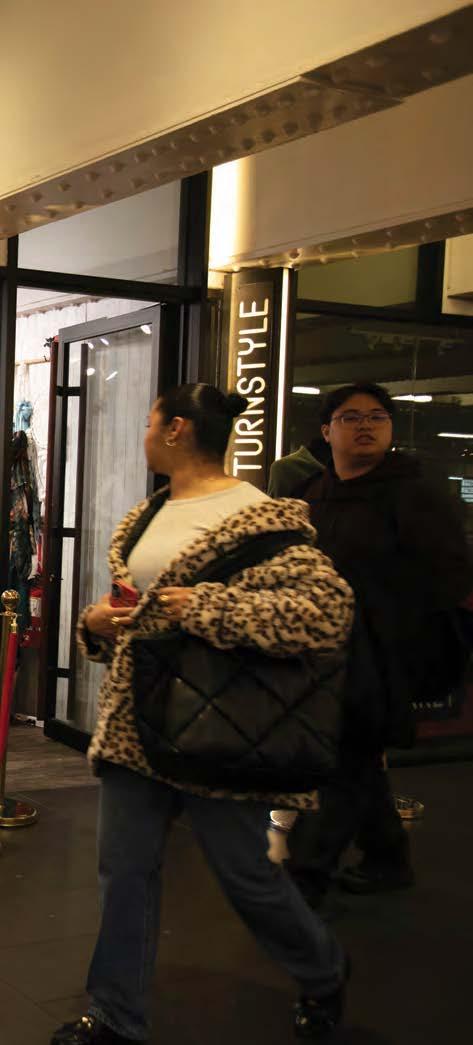
tion mezzanines. e Loft Candy Company leased four underground storefronts for an annual minimum of $10,000 at each space; the deal also provided 10% gross sale payments to the city, according to a 1949 newspaper article in the NewYork Tribune
e subway concessions that following year, excluding advertising, generated more than $1.3 million in revenue for transit. Adjusted for in ation, that works out to roughly $17 million today, or four times what the MTA is projecting for 2024.
Ironically, part of the MTA’s plan to revive its subway retail is a throwback: Florio, the MTA’s real estate transactions chief, said the authority is negotiating with a company to place vending machines at 26 sites — some bulky CVS vending machines also currently pepper the system — and is about to close a deal with a national bank for ATMs at four locations.
Separately, the MTA has invited arts groups and nonpro ts to reimagine a couple of dozen hard-to- ll subway retail spaces — rent-free.
Operating a business in the subway comes with some inherent challenges.
e MTA has lengthy retail design guidelines that touch on everything from signage to lighting to the materials used for façades. e agency doesn’t allow unli-

censed smoke shops selling cannabis products, for example, which have proliferated above-ground. X-rated “adult uses” are also prohibited.
What’s more, the details of making a space ready for retail are subject to MTA approval, and state preservation reviews kick in if a shop resides in a historic structure. e work on older underground stations can be particularly laborious because many lack water or sewer lines, which can make selling freshly brewed co ee or food prohibitively expensive.
Most crucially, the startup cost can be four times that of street-level shops due to insurance, re suppression equipment and other expenses, according to the Eno Center for Transportation, a Washington, D.C.-based policy think tank.
e MTA works with tenants on rent abatements if a major utility upgrade is necessary, Florio said. However, providing turn-key spaces for retailers would be far more attractive.
Unfortunately, transit agencies are in an especially di cult position to make that happen compared to the private sector, said Mike Smith, senior managing director of real estate at Streetsense, a D.C.based rm that works on retail strategies with transit agencies, including the MTA.
“It is a di erent ballgame for public institutions in what kind of abilities they have,” he said. “It’s not apples to apples, for sure, and yet at the same time they’re competing for the same retail tenants
that the private sector is.”
Christodou, the orist, said business was at its peak in the 1990s, with a healthy mix of corporate accounts, phone-in orders and grab-and-go bouquet purchases. Subway retail had a captive audience and a consistent stream of commuters.
GFlorist paid nearly $3,500 in rent per month in 2019; today the business pays about $2,500 through a rent abatement with the MTA, according to Christodou. e MTA created a rent relief program in October 2020 following pleas from struggling retailers. Under the policy, qualifying tenants had their rents reduced to 10% of their base rent or 10% of a store’s gross sales — whichever was greater. About 105 tenants across the MTA’s network originally took the agency up on adjusted rents.
e policy was expected to sunset by the end of 2023, or when ridership hit 75% of pre-Covid levels. But after transit o cials reassessed the retail climate in September 2023, the MTA board decided to extend the policy through 2025. Participating subway tenants’ rents increased to 30% of their base rent with 3% annual increases.
Retail experts point to international counterparts the MTA could draw inspiration from when it comes to trying out new strategies for underground retail.



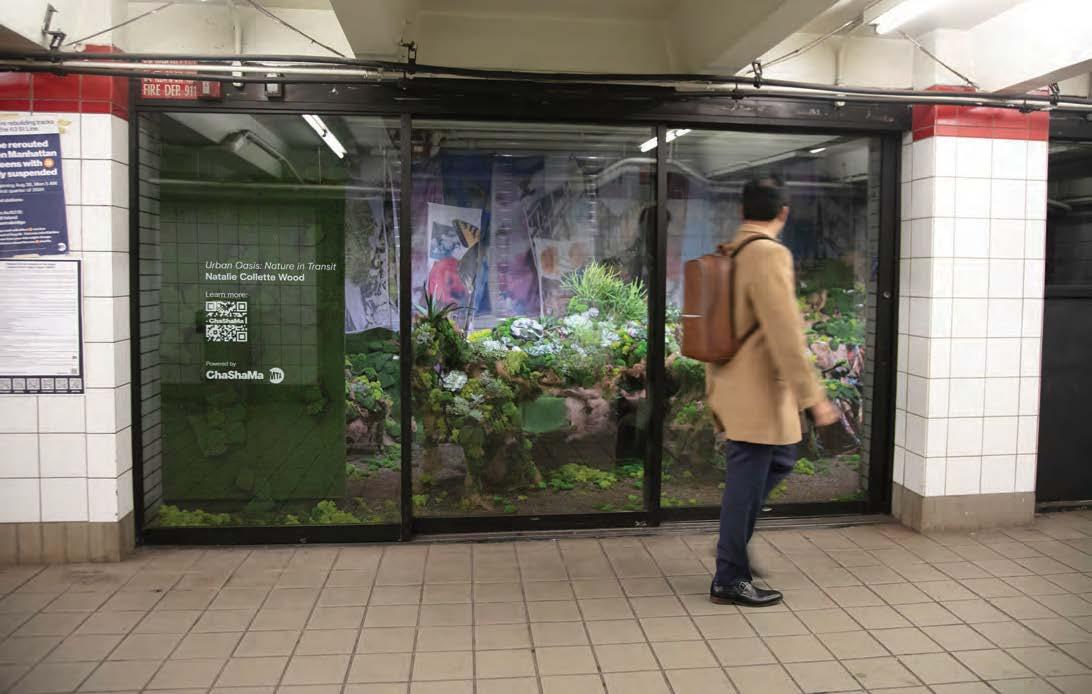
Seoul and Tokyo boast modern vending machines with an array of creature comforts and display art to enhance station esthetics. e London Underground has partnered with brands for pop-up kiosks in and around stations. Some European cities o er pay toilets, where transit customers are charged a small fee to use the restroom. In New York, pay toilets are currently illegal under a 1975 state law.
“Stations are community hubs,” said Smith, the retail transit consultant. “ e more we can think about them as such — as opposed to just a utilitarian place to get people in and out of — whether it’s commercial, cultural or otherwise, I think will only enhance the experience for riders.”
Recently, the MTA has begun covering up some empty storefront windows with advertising. e authority has also launched a rent-free pilot with Midtown East-based arts nonpro t Chashama, which connects visual artists with a ordable workspaces, including at the Fifth Avenue-53rd Street station near Central Park.
ere, Bronx-based artist Natalie Wood has converted a former retail space into a living installation that features more than 350 succulents woven into chairs and other furniture. e art, Wood said, is inspired by her winding canoe trips along the Bronx River where she often spots junk being slowly reclaimed by nature. e installation will be on display through August.
Commuters similarly navigate subterranean channels littered with long-empty shops on the banks of mezzanines and platforms. Instead of nature intervening, transit o cials will need to have a hand in revitalizing defunct spaces to grow the future of mass transit.
“I think doing interventions like this really refresh the subway experience and kind of bring back that magic that New York has that I think everybody’s wishing for after Covid,” said Wood. “I think it makes the subway experience a bit more enjoyable, right? And it connects you to a greater community.”
New Yorkers would be forgiven if all the recent talk about “City of Yes” has begun blurring together in their minds.
After all, the term refers to not one, but three different sets of reforms that Mayor Eric Adams is trying to get passed.
All three of the packages have to do with zoning — the city laws that govern what can be built where. But each one has a different focus: housing, businesses and the environment.
The Adams administration says the city’s zoning code, which has not gotten any major updates since it was adopted in 1961, has grown outdated and is ill-suited to address those issues. The result, he says, has been a city that says “no” to too much — from desperately needed housing to dancing in bars and restaurants.
To update the laws, the administration must shepherd all three

rewrites, known as “zoning text amendments,” through the city’s monthslong public review process, starting with community board feedback and culminating in a binding vote by the City Council. His administration released the three packages one by one, starting with the least controversial — the climate-related package, which was approved in December — and ending, the mayor hopes, later this year with a vote on the thorny housing reforms.
Many of the reforms are likely to run into sharp opposition at the local level, even as they enjoy support from business groups and some policy experts. Altogether, they could amount to one of Adams’ most signi cant legacies — if he’s able to get all three passed.
Here are the most important things to know about each City of Yes proposal — who wants them, who doesn’t want them, and what they will and won’t do.
What’s its status?
is business-oriented plan is near the end of its public review, with the City Council set to hold a vote by late May.
What would it do?
is package has 18 di erent proposals that would generally loosen the rules about where di erent kinds of businesses can operate — helping to boost the economy and create jobs, according to backers. Its most notable proposals include:
◗ Allowing small “clean” manufacturers like 3D printers, microbrewers, potters and bakeries to operate in regular commercial districts instead of only industrial zones

What’s its status?
A roughly seven-month public review will kick o sometime in April for this housing-focused plan, expected to be the most consequential — and controversial — of the three City of Yes packages. e City Council would vote on it by the end of 2024.
What would it do?
e Housing Opportunity package takes aim at the city’s desperate apartment shortage by allowing “a little more housing in every neighborhood,” the administration says. Mayor Adams says it could produce about 100,000 new homes over 15 years, although a precise estimate will be released in late April.
The proposals include:

◗ Letting life sciences labs expand more easily by permitting them outside industrial areas and alongside hospitals and universities
◗ Limiting the intrusion of commercial businesses in manufacturing areas, in hopes of preserving industrial jobs
◗ Allowing commercial activity on the upper oors of mixed-use residential buildings
◗ Ending the role of zoning in regulating dancing, including by allowing dancing in any bar or restaurant where live music is already allowed
◗ Letting corner stores open in residential areas if they get a special City Planning authorization, and allowing commercial space on residential “campuses” like public housing developments
◗ Allowing “micro-distribution” delivery centers in storefronts in an e ort to get the e-bike-heavy hubs o of sidewalks
Who’s for and against it?
e Economic Opportunity plan enjoys support from a slew of business improvement districts, chambers of commerce and other industry groups, like the New York City Hospitality Alliance and the Real Estate Board of New York.
On the other hand, a majority of the city’s 59 community boards voted against it in the public review that began last fall, with opponents mostly objecting to the newfound mixing of commercial and residential uses.
Adams’ City Planning department tweaked the plan in March in response to that feedback. Changes included banning the conversion of apartments into commercial space to avoid incentivizing any loss of housing, and capping home-based businesses at 1,000 square feet.
What really matters is how the City Council feels. Lawmakers mostly praised the proposals’ goals during a hearing in early April, and Speaker Adrienne Adams thanked the administration for including some pro-manufacturing policies that lawmakers had sought.
Council members did demand some additions, such as regulations on last-mile delivery facilities and promises to increase funding for the Buildings Department to enforce the new regulations.
◗ Allowing more density in low-rise neighborhoods across the city, including 3- to 5-story buildings near public transit
◗ Giving a 20% density bonus to developers if they include a ordable apartments in higherdensity parts of Manhattan, Western Brooklyn and Queens
◗ Eliminating requirements for new developments to include parking spaces
◗ Legalizing accessory dwelling units of up to 800 square feet in backyards, basements or garages
◗ Allowing housing above shops on outer-borough “main streets” where apartments are currently restricted
◗ Legalizing shared amenities like kitchens, which could ultimately allow for the return of single-room occupancy-style housing
◗ Encouraging more o ce-to-residential conversions by permitting them in more outer-borough neighborhoods and in buildings built before 1991, later than the current cuto of 1961 in much of the city
Who’s for and against it?
e housing plan has early support from some developers and policy experts, including the Regional Plan Association and the New York Housing Conference. More surprisingly, it also won praise from the preservation-oriented Municipal Arts Society, whose president wrote a Crain’s op-ed calling the proposals “a welcome departure” from the more piecemeal rezonings led by previous mayors.
A handful of Manhattan o cials, have endorsed parts of the plan. Most importantly, Council Speaker Adrienne Adams has come close to outright endorsing the package — although she has also predicted challenges in persuading fellow lawmakers from low-rise neighborhoods to get onboard.
“We are homeowners, and we are used to the characteristic of our community,” the speaker said of her own southeast Queens district at a housing policy event in February. But she added, of City of Yes: “We have to be up to meet that challenge.”
Changes to parking rules in particular may prove controversial in the outer boroughs, even though the plan would not touch any parking spots that already exist.
On the opposite end of the spectrum, the Housing Opportunity plan may not be especially tantalizing for left-wing lawmakers, who tend to be more interested in tenant protections than supply-oriented policy xes that encourage development.
“ ere’s folks who have been outwardly supportive of it, and members who have concerns about individual pieces of it,” one City Council member told Crain’s in March.
Well aware of the ght they have in store, Adams administration o cials have downplayed the plan’s potential impact, saying it was crafted to avoid dramatically changing any neighborhood’s appearance.
What’s its status?
Approved by the City Council in December, in a 38-8 vote.
What will it do?
e Carbon Neutrality package aimed to remove bureaucratic obstacles to climate change projects, including building retro ts, electric vehicle infrastructure and renewable energy. e Adams administration hopes it will help the city reach its goal of an 80% reduction in carbon emissions by 2050.
It contained 17 policy proposals, including:
◗ Removing limits on the number of solar panels that can be installed on a roof
◗ Loosening rules on where well-insulated walls can be added to buildings
◗ Opening up more of the city to electricvehicle charging infrastructure
Who was for and against it?
Environmental groups supported the Carbon Neutrality rewrite, as did some renewable energy business groups, the Partnership for New York City, and the EV-inclined transportation company Revel. ere was no major push against the package, but the eight lawmakers who voted against it in December were all Republicans or conservative Democrats. Caroline Spivack contributed reporting.


A large industrial site in leafy Boerum Hill that the city recently rezoned for housing will be developed by busy builder Yitzchok Katz.
Property records made public April 10 identify Katz, the chief executive of Goose Property Management, as the buyer of the threelot site occupying much of the block framed by Bergen and Wycko streets, and ird Avenue and Nevins Street.
cel, which for decades has been home to a lm-products factory. e seller of the site, Ulano, closed on the deal April 1, according to the deed that appeared in the city register April 10.
Four-building development
Katz, who could not be reached through Goose by press time, is cleared to develop a four-building development encompassing 300 units, 90 of which will be a ordable, or o ered at reduced rents for those in certain income bands, according to the zoning resolution passed by the City Council in fall 2022.
The property, which will use the address 280 Bergen St., is also approved for 9,600 square feet of storefronts and a 10,000-square-foot community center.
Katz, who does not appear to have been linked previously to the site despite its publicized journey through the city’s rezoning process, paid $39.7 million for the par-
It’s not clear if Katz was in talks with Ulano at that point about how the site could be developed, but he did enter into a contract to buy the property back in July, records show.
Katz’s property, which will use the address 280 Bergen St., is also approved for 9,600 square feet of storefronts and a 10,000-square-foot community center, the resolution says. e developer has applied for demolition permits with the De-
partment of Buildings, though they have yet to be fully approved, records show.
e site, which is near both Barclays Center and the Gowanus Canal, consists of three parcels, the largest of which is an L-shaped, low-slung brick building from the 1940s at 268 Bergen St. that clocks in at 49,000 square feet, records show. Two muchsmaller sites face Wycko Street.
Founded in the 1920s by Russian immigrant Joseph Ulano, Ulano has manufactured a range of chemical products through the years, including hand sanitizer, though it did not always have a warm relationship with its neighbors. In the late 1980s, the company came under re for allegedly being a polluter, a problem later recti ed with an incinerator, while the noise from delivery trucks drew ire more recently. An international conglomerate with locations in Singapore, Germany and India has owned Ulano

since 1999, according to its website. E orts to reach the company, which appears to have moved out of the property a year ago, were unsuccessful.
Extremely active in Brooklyn and Queens, though relatively new to the development scene and with a low-key presence, Katz appears to be juggling several major projects at once. He’s developing two residential towers nearby,
a 23-story o ering at 370 Livingston St. and a 15-story version at next-door 362 Livingston; an even taller tower with 45 stories is underway at 570 Fulton St. Katz, who also does business by way of the shell company Developing NY State, also recently opened the doors to 2-24 26th Ave., a 137unit rental project in Astoria, Queens, where market-rate studios start at around $2,600 a month.





They need to remain part of the debate for New York to have a serious shot at building its way out of the housing crisis
Last year, state lawmakers were unable to come together on a housing deal, frustrating virtually everyone. is year, they were able to come together on a housing deal, frustrating virtually everyone.
e framework, which

Gov. Kathy Hochul announced April 15, includes a version of “good cause” eviction protections that tenant activists slammed for being too watered down, along with a replacement for the 421-a a ordable housing tax break that landlords slammed for being too watered down. It also gives property owners more exibility to raise rents on regulated apartments after renovating them that landlords slammed for being — you guessed it — too watered down, and it includes several other measures — O ce-to-residential conversions! Denser residential buildings! — that most organizations seem too angry to comment on at the moment.
It has not been met with an outpouring of support, in other
words, although unions, larger developers and the Adams administration appear fairly happy with it. And while the nal details are still being worked out, one change that will not happen is a lastminute inclusion of 2023’s statewide housing mandates. Keeping them out of this year’s conversation was likely a necessary sacri ce to get any deal together, but o cials should still not abandon the idea if they are truly set on confronting New York’s housing shortage. Growth mandates being kept out is no surprise. e Hochul administration pointed to them as the biggest reason why a housing deal fell apart entirely last year, as suburban lawmakers refused to sign onto what they argued was a top-down e ort to transform their districts, and the governor indicated before budget negotiations even started in earnest this year that she would not pursue them again right away. Although she said in her State of the State address that a statewide approach to encourage new homes was still necessary, insisting on
mandates for the second year in a row probably would have meant no housing deal for the second year in a row.
But this should not mean the controversial policy is o the table entirely, especially if Hochul’s goal of building 800,000 new homes in the state over the next decade includes ramping up production in the suburbs. e policies in this year’s package aimed at making it easier to build homes are almost entirely focused on the city, and while a housing shortage has long been a problem within the ve boroughs, the city has actually done a slightly better job at producing housing than the suburbs — particularly Long Island — in recent years.
e $650 million incentive program Hochul launched over the summer appears set to remain the state’s chief strategy for encouraging development in the suburbs coming out of the budget. Hochul has touted this program and singled out Westchester and Long Island leaders as showing interest, but it remains to be seen how
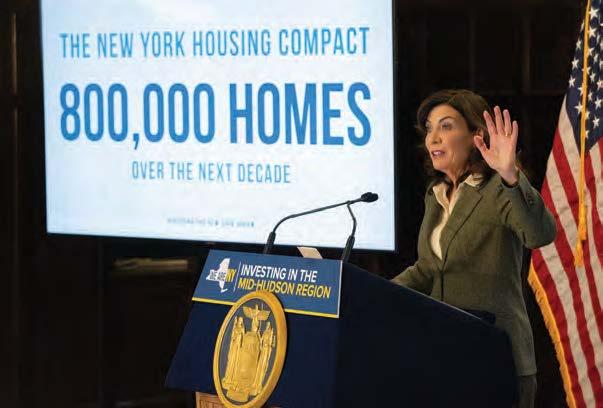
much of an actual supply increase the program will spark. Many housing advocacy groups are skeptical, as suburban areas have historically not been willing to increase their housing supply voluntarily.
e amount of angry statements organizations from across the political spectrum have already released about the housing package over the past few days make it clear that housing should remain a hot topic in Albany even if, as ex-
pected, this deal ultimately passes. Pulling back on mandates one year after they helped tank a comparable deal is understandable, particularly given the outsize role the suburbs are poised to play in this year’s elections, but they need to remain part of the debate going forward for New York to have a serious shot at building its way out of its housing crisis. Any package that included them would similarly face heaps of criticism — but not for being too watered down.
New York City has decided to scale back its relationship with health care company DocGo by declining to renew the provider’s $432 million contract to care for and transport migrants upstate, the mayor’s o ce con rmed to Crain’s on April 9.
As of the following morning, the company’s stocks dropped from $3.85 to just above $3. DocGo’s emergency, no-bid contract to provide services to migrants in and outside of the city is set to expire May 5. Instead of renewing
moving forward,” said Camille Joseph Varlack, Mayor Eric Adams’ chief of sta , in a statement.
The DocGo emergency contract that currently serves approximately 3,600 migrants will instead be replaced by a competitive request for proposals to identify a new provider.
the contract, the city says it intends to end the DocGo contract and issue a competitive request for proposals to identify a new provider that will take over the work.
“As part of our work to reduce spending, we will not be renewing the full DocGo emergency contract that currently serves approximately 3,600 migrants at this time and will instead be issuing a competitive RFP to take over this work
Once the contract period ends, the city says it will use an existing contract with Garner Environmental Services to care for some 1,800 migrants downstate for roughly three months. Garner’s services will cost the city $10 less per person, per night compared to the existing DocGo contract, according to the mayor’s o ce. Varlack said the city is also working with Comptroller Brad Lander’s o ce “on a temporary extension for the upstate DocGo hotels to ensure we are not disrupting children in school and are not leaving our upstate partners without proper notice.” She said DocGo will continue to serve families upstate until the new RFP provider is selected.
DocGo spokesperson Abigail Rush said the company is “immensely proud” of the work it has accomplished on the city’s behalf and added that DocGo will continue to provide medical services, case management and other services to asylum seekers in New York City under the existing contract and other continuing contracts with the city.
Rush emphasized that DocGo’s
contract has been extended through the end of the year to provide services to migrants upstate. “ e contract between the New York City Department of Housing Preservation and Development (HPD) and DocGo for housing of asylum seekers in hotels in Upstate New York has been extended through the end of 2024,” Rush said in a statement. “ is extension is designed to ensure sucient time to transition and/or close emergency sites as needed and when directed by the City.”
e news about DocGo’s contract broke after the market closed. Its stock was priced at $3.85 a share on April 9, down from a 12-month high of $10.50 in August.
DocGo has been beset by controversy over the last year. In a July New York Times report, migrants in DocGo’s care said they had been misled to believe the company would help them nd work and that they had endured threats from the company’s hired security teams.
Meanwhile, DocGo CEO Anthony Capone resigned in September after the Albany Times Union revealed he had misrepresented his college education.
State Attorney General Letitia James launched a probe into DocGo last summer, and City Comptroller Brad Lander began a “realtime audit” of the company’s migrant services contract in Septem-

ber. Investors in the company led a class-action lawsuit against the rm in October, seeking to recoup the losses they su ered after the company’s stock prices fell following negative news coverage.
Lander praised the city’s decision to wind down its emergency contract with DocGo but raised concerns over the city’s continued reliance on emergency contracts for migrant services. A recent comptroller review of Garner, the replacement contractor, found the company to be “extremely expensive.”
“While I am glad to see the Administration shift away from DocGo, we continue to be concerned more broadly about the costly emergency contracts the City is
using to sta services for asylum seekers,” Lander said in a statement. “Our o ce will watch closely to ensure that asylum seekers do not see a lapse in services and urges the City to issue an open-ended transition to non-pro t organizations to avoid paying for-pro t companies millions more than necessary.”
City Hall said the decision to part ways with DocGo will be good for city co ers.
“ is will ultimately allow the city to save more money and will allow others, including non-profits and internationally recognized resettlement providers, to apply to do this critical work, and ensures we are using city funds e ciently and e ectively,” Varlack said.










Nominate a decision maker under 40 who has reached the pinnacle of success in their industry.

START YOUR NOMINATION AT Nominations due May 31 CrainsNewYork.com/40Nominate
Notice of Qualification of STRATEGIC
Purpose: any lawful act.
Notice of Formation of JadeM property LLC
Arts. of Org. filed with Secy. of State of NY (SSNY) on 03/27/24.
Office location: NY County. SSNY designated as agent of LLC upon whom process against it may be served. SSNY shall mail process to Corporation Service Co., 80 State St., Albany, NY 12207-2543.
Purpose: Any lawful activity.
Notice of Formation of LEXVIEW PROPERTIES LLC
Arts. of Org. filed with Secy. of State of NY (SSNY) on 03/15/24. Office location: NY County. SSNY designated as agent of LLC upon whom process against it may be served. SSNY shall mail process to Corporation Service Co., 80 State St., Albany, NY 12207-2543.
Purpose: Any lawful activity.
Michael P. Budden, P.A., PLLC filed Arts. of Org. with the Sect'y of State of NY (SSNY) on 2/14/2024.
Office: New York County. SSNY has been designated as agent of the LLC upon whom process against it may be served and shall mail process to: The LLC, 40 Grove St, Ste 1C, NY, NY 10014.
Purpose: Physician Assistant.
market. Adams said the tower would “energize Midtown Manhattan as the world’s most important business address.”
“We’ve heard rumors of this tower for a long time, and some weren’t sure it was going to hap-
“We’ve
heard rumors of this tower for a long time, and some weren’t sure it was going to happen.
But I’m here to say and let you know, there’s no rumors — it’s a reality.”
pen,” Adams told the audience. “But I’m here to say and let you know, there’s no rumors — it’s a reality.”
Gri n’s rms Citadel and Citadel Securities will be the anchor tenants, and their 2,100-person workforce will occupy at least 850,000 square feet. Construction is tentatively expected to start in 2026, a spokesman said.
In his remarks, Adams made


frequent references to Vornado CEO Steven Roth, who was in attendance. New York has managed to recover from the pandemic because “we’re made up of a city of Steve Roths,” he said.
Rezoning boost
Although Adams touted the project, it was not clear whether his administration played any ma-
jor role in the advancement of the long-planned tower.
e mayor’s o ce also released new renderings of the tower, featuring a “stepped” design by architects Foster + Partners. e developers are seeking a density bonus by including a 12,500-square-foot public concourse along Park Avenue — a potential perk that will require a monthslong land-use review to obtain.
Although air-rights transfers typically only happen between adjacent properties, the planned tower at Park Avenue and East 51st Street has been boosted by farther- ung properties thanks to the terms of the 2017 East Midtown rezoning, which allowed landmarked sites to sell air rights to properties further away.
Adams appeared in a chipper mood April 16, regaling the crowd
with a campaign-style recitation of his administration’s work overseeing a drop in some crime categories and an economic recovery from the pandemic. He also touted the just-announced state budget deal, which satis es “every single piece of the housing agenda” his administration had asked for, Adams said.
C. J. Hughes contributed reporting.

Even before he went pro, Carl Banks was navigating a post-playing career plan
Exiting the big leagues and navigating a post-playing career is a di cult transition for any athlete, but for former NFL linebacker Carl Banks, the planning process started even before he went pro.
“Michigan State during the years that I was there, we were awful,” he said of his college playing days, “so I didn’t even know if I was going to be drafted by the NFL.”
Banks earned his degree in communications from the East Lansing school and gured he would use it to write commercials or start an agency. Instead, the New York Giants drafted him as the third pick in 1984, and he went on to win two Super Bowls with
successfully pitched a “big and tall” clothing brand to Foot Locker coming o of his rst Super Bowl championship, in 1987, and his efforts eventually led to a deal with the G-III Apparel Group, where he still works today as president of the company’s sports division. e rm is based in Midtown South with about 4,600 employees, and it had about $3.1 billion worth of sales for the scal year ending Jan. 31, 2024, according to SEC lings.
“I always wanted to be this dual threat, and I had a really good example of that with Earvin ‘Magic’ Johnson,” Banks said. “He had started to pursue a lot of his interests while he was an L.A. Laker, and I looked at that and I’m like, yeah, I think that’s the way to go.”
“In every single American sport, Starter was a part of it, and they were a part of every championship.”
the team during a 12-year NFL career that also included stints with Washington and Cleveland.
Banks always kept in mind that he would have only a limited number of years as a professional athlete and started pursuing his other interests, particularly fashion, while he was still playing. He
Banks has multiple focuses at G-III, ranging from sales and marketing to helping the company grow. His main project right now is pushing for a big revival of Starter jackets. G-III is the exclusive licensee in the U.S., Canada and Mexico for the brand, whose apparel features the logos of many professional football, baseball, basketball and hockey teams. Starter rst burst onto the football scene in the ’80s, when Banks himself was a spokesman for the brand, and he is trying to re-create some of the magic from
its initial wave of popularity.
“If you ask anybody about a Starter jacket, they’ve got a Starter story for you,” he said. “In every single American sport, Starter was a part of it, and they were a part of every championship.”
in the sports world
Banks also has not completely left the NFL world, as he still works for the Giants as part of their media and broadcast team. He previously worked on player development for the New York Jets as well. Although he can see the appeal of becoming a coach, he thinks his interests are too varied for him to fully commit to such a notoriously demanding job.
But Banks still misses certain aspects of the game and says nothing can compare to the rush of playing. However, he has enjoyed a smooth move from football to business overall, something he mainly attributes to having years’ worth of preparation time.
“ ere are a lot of things that you miss—the camaraderie, the routine of seeing people in practice—but I was prepared for that because I had about 10 years of getting ready,” he said. “People ask me which is tougher: football or fashion? I’m like, ‘Fashion, because there are no referees.’”
By | Eddie SmallJOB TITLE Founder and president, G-III Sports by Carl Banks; color analyst, the New York Giants
GREW UP Flint, Michigan
RESIDES Bergen County, New Jersey
EDUCATION Bachelor’s in communications, Michigan State University
FAMILY MAN Banks has two brothers, ve grown children and a 2-year-old grandson.
SCOOTING AROUND He enjoys riding a Vespa, and he expects to use it fairly often this spring, thanks to a certain policy change in New York. “As soon as the weather breaks, I’ll be riding that in the city because of congestion pricing,” he said.
SUPER BOWL PREDICTION
Banks thinks Kansas City is a great choice to win the Super Bowl again next year, for the third season in a row, although he sees Buffalo as a major threat as well. “I’m not going to bet against Patrick Mahomes. He’s going to be there, and I like Josh Allen also,” he said.
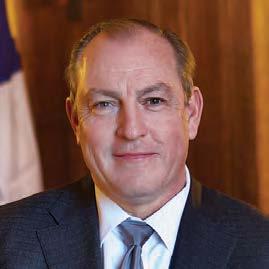

WEDNESDAY, JUNE 5
8:30–10 a.m.



Vito J. Fossella
BOROUGH PRESIDENT
Staten Island
Vanessa L. Gibson
BOROUGH PRESIDENT
Bronx
Mark Levine
BOROUGH PRESIDENT
Manhattan
180 Central Park S. CrainsNewYork.com/June_PB
Antonio Reynoso
BOROUGH PRESIDENT
Brooklyn
Donovan Richards Jr.
BOROUGH PRESIDENT
Queens





